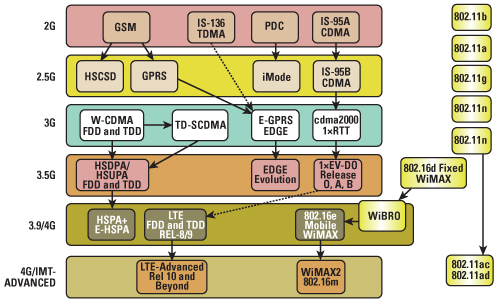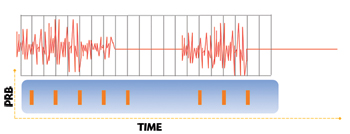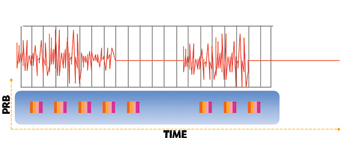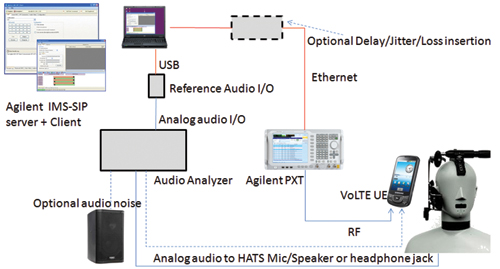As an all Internet Protocol (IP) packet environment, the Third Generation Partnership Project’s (3GPP) Long Term Evolution (LTE) cellular radio standard was intentionally designed without support for existing circuit-switched voice services. The idea was that mobile operators would simply adopt this entirely new, IP-based infrastructure to replace their legacy 2 and 3G networks.
The industry may eventually move to LTE-only networks, with full coverage and all services –data, voice, SMS and Internet-enabled applications –being transported via IP on LTE. However, such an ideal could be 10 years or more in the future. Moreover, with devices available for use in both the home network and roaming situations, the cost to the operators of providing full LTE network coverage and the cost of legacy radio components being relatively low, it is unlikely that LTE-only devices will be made available any time soon, or that they would prove acceptable to consumers. Given the reality of this gradual migration to LTE, it is necessary to look at how LTE will interwork with voice services in 2G/3G. Figure 1 illustrates how network technologies have evolved.

Figure 1 Technology evolution from 2G to today.
LTE uses a newer air interface technology based on Orthogonal Frequency Division Multiplex (OFDM) modulation, briefly considered for 3G, but available chipsets were considered too power-hungry for mobile devices at the time. Developments of other OFDM applications, such as digital TV broadcast and wireless LAN, have advanced chipset design so that this is no longer the case. To support its all-packet structure, a project concurrent with LTE defined Evolved Packet Core (EPC), a network architecture that simplifies signaling and moves more responsibility for in-session data management to the Evolved Node B (eNB) or base station. The resulting reduced latency makes packet-based voice services and high-speed data services, such as streaming video, possible.
Until voice service on LTE is generally available, there are two development paths. For operators in much of the world, where current networks are 3GPP GSM/W-CDMA/HSPA, there is a natural evolution to LTE and standards-based support for full backward and forward compatibility, both in the radio access network and the core network that lies behind it. Until LTE voice service is implemented, making or receiving a voice call will cause an automatic fall-back to the best 3G or 2G bearer available, where both voice and data service can be provided. Voice service is then provided by the inherent circuit-switched mechanism and continuing data service managed by radio resource release and re-assignment messages. This technique is known as Circuit-Switched Fall Back (CSFB). Fallback scenarios all the way to basic 2G GSM voice and GPRS data are defined.

Figure 2 Progress toward full voice service over LTE.
In countries where current networks are 3GPP2 (cdma2000/1xRTT/1xEV-DO), integration issues are harder to resolve. Without exception, operators have chosen 3GPP LTE as their next-generation technology. While there is support in LTE for the discovery and measurement of neighbor 3GPP2 cells, the core LTE and 3GPP2 networks have major differences. The first LTE implementations will support only “non-optimized” data handovers where, when the client device (technically “User Equipment” or UE) loses LTE service, it has to acquire 1xEV-DO service. In idle mode this is not really an issue, but during an active data session it will cause some disruption. Later implementations will support “optimized” data handovers, where the UE will be directed to a new serving cell and have much more information about it. Voice service in both cases is supplied by a separate cdma2000 radio in the UE and known as simultaneous voice and LTE (SVLTE); there is no integration of voice and data services and battery power consumption is compromised. Figure 2 shows the steps to full voice service over LTE for both 3GPP and 3GPP2 networks.
Voice Service Over LTE
Voice over LTE (VoLTE) provides a standardized system for transferring voice traffic over an LTE air access network and involves the use of Voice over IP (VoIP) and a core network, based on an IP Multimedia Sub-system (IMS), to provide rich voice services, including video calling. IMS provides the framework for delivery of IP multimedia. The main protocol for setup and connection control of these services is Session Initiated Protocol (SIP), which was designed to work with generic open IP networks. SIP provides the call setup and high level call controls and also provides extended services (in 2G/3G sometimes called supplementary services) such as call hold, multi-party calls, delivery of SMS, video calling, etc.
A number of operators worldwide have stated their intention to use the introduction of this technology to re-focus attention on voice services and voice quality rather than on data connection speeds and have already set an expectation of the introduction of “premium quality” or “high definition” voice services. The preferred solution is Single Radio Voice Call Continuity (SRVCC), an approach that enables operators to deploy voice over LTE, seamlessly handing over to existing GSM W-CDMA and CDMA 1x installed coverage as needed, to provide a robust voice service with global reach to their LTE Smartphone users. (It is also possible that an operator may choose to confine such a premium voice service to LTE coverage areas only and simply disconnect the call if the quality of service cannot be maintained.)
Once VoIP/IMS service is available in an LTE network, there remains the challenge of moving a voice call to a legacy network if, for instance, the UE moves out of an LTE coverage area. SRVCC provides the ability to transition a voice call from the VoIP/IMS packet domain to the legacy circuit domain, when no LTE coverage is available. Variations of SRVCC are defined to support both the GSM/UMTS and CDMA 1x circuit-switched domains. If the legacy circuit-switched network also has an associated packet capability and is capable of supporting concurrent circuit/packet operations, the subscriber’s data sessions can be handed over to the legacy network, in conjunction with switching the voice call from the packet to the circuit domain. In this case when the voice call finishes and the mobile re-enters LTE coverage, these packet sessions can be handed back to LTE. While SRVCC does not require modifications to the legacy radio access network (RAN), it does require a significant modification of the operator’s legacy core and full deployment of IMS circuit-packet continuity services.
But (and There Is Always a But…)
While the industry hype is all about LTE, many 3GPP-based operators have chosen HSPA+ (or evolved HSPA) as a more cost-effective short-term upgrade strategy. For these operators, most of whom have already deployed HSPA, HSPA+ is a software upgrade – ideal in these days of tight budgets. The option to have the HSPA+ network operate fully in packet mode for both voice and data updates the backhaul network to make future LTE deployment simpler: only the physical (base station radio) layer would need major upgrade.
The major goals of HSPA+, as defined by the 3GPP standards organization include:
- Exploiting the full potential of the CDMA physical layer before moving to the OFDM physical layer of LTE
- Achieving performance comparable with LTE in a 5 MHz channel bandwidth
- Providing smooth interworking between HSPA+ and LTE
- Achieving co-existence of both technologies in one network
- Allowing operation in a packet-only mode for both voice and data
- Being backward compatible with earlier user devices
Current visions show “HSPA+ Advanced” supporting over 300 Mbps downlink and almost 70 Mbps uplink – easily high enough to give a similar user experience to LTE – in proposed 3GPP Specification Release 11, scheduled late in the decade. It remains to be seen how the trade-offs between the further developments of HSPA+ and LTE will evolve.
An emerging industry term, “Voice over Mobile Broadband” refers to the end-to-end routing of VoIP/IMS voice service over not just LTE, but also over HSPA+. Whichever air interface technology is used, VoMBB allows carriers the opportunity to manage and optimize the flow of mobile VoIP traffic generated by Over the Top (OTT) applications and services (that is Internet-enabled Smartphone applications and services provided by third parties). This can potentially open up new models for charging of voice services and even possible relationships between carriers and OTT application developers.
It is Mobility That Makes the Difference
Voice over Internet Protocol (VoIP) is not new – it has been around for many years in the fixed network and is the backbone behind much of today’s landline voice traffic. Nor are many of the other technologies involved with packet-based networks – the IPv6 device addressing standard is probably the most recent – but there are new challenges in applying them to mobile networking.
We still see the landline as an analog copper pair, but in reality once it reaches the local exchange the network is all-digital. Designed initially for high-speed data services and adapted for voice, VoIP is a packet-switched environment that breaks transmission into manageable chunks and routes them from end to end in the most efficient way for the network. In the fixed network, effects such as error rate and latency are virtually zero and can be ignored, whereas in the mobile air interface environment they are major issues. Typical error rate in a fiber backbone is of the order of 1 × 10-20 where mobile devices make do with a threshold of 1 × 10-3, so coding algorithms, error correction and re-transmission of failed packets absorb much more of the mobile network’s time and bandwidth. Inherent latency in 2 and 3G systems means that packet-based voice services are impossible: a circuit-switched architecture with its built-in waste of resources, with either the forward or back channel silent part of the time, had to be provided. (Typical conversations are half-duplex, unless there is an argument going on!)
When VoIP packets are small, signaling overhead may be as high as 60 percent. Again, this is not an issue in high-speed fiber networks, where ultimate bandwidth is virtually limitless, but the same is not true in the mobile air interface. A single base station radio (eNB) may be communicating with many UEs at the same time – some idle, some in voice calls and others in data sessions – and has a finite total data bandwidth available to it. Consumers pay only for their net data usage, the operator absorbs the cost of the overhead and so would like it to be the least possible percentage of the traffic. Two of the mechanisms defined in the LTE standards to alleviate this signaling burden are semi-persistent scheduling (SPS) and transmit time interval (TTI) bundling.
Semi-Persistent Scheduling
In true dynamic scheduling, each sub-frame SF (1 ms) has to be allocated individually, leading to a high usage of the Physical Downlink Control Channel (PDCCH), a shared logical channel in the 3GPP LTE structure, where allocation information for each UE is carried. Voice by its nature involves lots of small resource allocations to many users, which, in a truly dynamically allocated network, leads to possible scheduling conflicts if everyone wishes to speak at once.

Figure 3 Semi-persistent scheduling.
Fully Persistent Scheduling
Fully persistent scheduling – equivalent to a circuit switched call, where resources are permanently assigned to a UE – would waste valuable network resources, but would dramatically reduce the requirement on PDCCH resources. Semi-persistent scheduling (SPS) provides temporary but regular allocations, reducing load on the PDCCH without over-committing Physical Downlink Shared Channel (PDSCH) resources.
SPS is a compromise between fixed and dynamic scheduling, where a user is allocated a small amount of resource for a fixed period at regular intervals. It enables radio resource to be semi-statistically configured and allocated to a UE for a longer time period than one sub-frame, avoiding the need for specific downlink assignment messages or uplink grant messages over the PDCCH for every sub-frame. It is useful for services such as VoIP, for which the data packets are small, periodic and semi-static in size; that is for the kind of service where the timing and amount of radio resources needed are predictable. Thus, overhead of the PDCCH is significantly reduced, compared to the case of dynamic scheduling. Figure 3 gives an illustration. There are several studies available online discussing the various benefits of SPS versus Dynamic scheduling.

Figure 4 Transmit time interval bundling.
Transmit Time Interval Bundling
If it is at the cell edge, a UE can either increase power or increase coding rate to ensure good reception at the eNB. However, if a UE at the cell edge has reached its maximum available transmission power, it may not be able to transmit an entire VoIP packet during one TTI, since the required coding rate may make the instantaneous source data rate too high for the necessary relatively-well-protected transmission.
The eNB gets power headroom status reports from each UE, telling the network when the UE is at its power limit. The UE can also provide buffer status reports to say how much information the UE has in its stack. Using these pieces of information, the UE may be instructed by the eNB to use TTI bundling.
In TTI bundling, a VoIP packet is transmitted as a single packet data unit (PDU) during a bundle of subsequent TTIs, without waiting for the HARQ feedback. HARQ feedback is only expected for the last transmission of the bundle. Downlink signalling is reduced (less ACKs/NACKs) and round trip delay is minimized, but Uplink Shared Channel (ULSCH) capacity is slightly reduced. Figure 4 shows an example.

Figure 5 Typical parametric and noise suppression test setup.
Measuring Voice Quality
When testing the voice quality of a VoIP device, whether by Perceived Evaluation of Speech Quality (PESQ) or a Perceptual Objective Listening Quality Assessment (POLQA), there is a long list of test needs. The testing can be performed using audio analysis, signaling test (including connections to servers, conformance testing, radio aspects, and handovers for fall back support), battery drain analysis and SMS/video call testing. Operator-specific test plans and field testing may also be necessary. Figure 5 shows a typical test setup for parametric audio quality and noise suppression test.
Conclusion
Regardless of the history and route to full packet-based voice services, the result is the same – a whole new slew of challenges for developers tasked with creating a range of different, more complex and more capable devices. Testing handovers between different radio access technologies (RAT) is becoming ever more important in the verification of LTE UEs. When out of the LTE service area, the UE will typically fall back to the network’s 2G or 3G infrastructure. For a positive end-user experience, UEs need to transition smoothly between these technologies. Many of these test challenges will stem from the needed interoperability between legacy 3GPP or 3GPP2 technologies and LTE. Addressing these challenges and ensuring VoLTE delivers the standard of voice call the network operators want to provide, will require developers and operators to increase their focus on testing real-world performance, before deploying a new device on a live network.
Sandy Fraser is a 25-year veteran of the RF and microwave industry with expertise spanning from DC to 100 GHz. Fraser’s career includes over 15 years of experience with a cellular radio focus, including 12 years for Agilent, working on base station emulators for manufacturing test systems including the 8922 and the E5515. Today he is a leader in LTE technology awareness and training, specializing in LTE protocol and signaling. He holds a BSc in Mechanical Engineering from Glasgow University.
